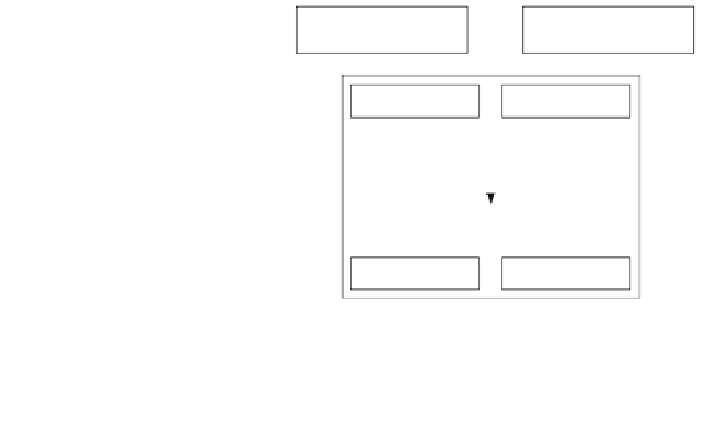Information Technology Reference
In-Depth Information
Fig. 14.3 The schematic
block diagram of ACT-R 6.
Taken from Anderson (
2007
)
and used with permission
Intentional System
(not modeled)
Declarative Memory
(Temporal/Hippocampus)
Goal
(DLPFC)
Retrieval
(VLPFC)
Matching (Striatum)
Selection (Pallidum)
Execution (Thalmus)
Visual
(Parietal)
Manual
(Motor)
Effector System for
Hands
(loosely modeled)
Visual System
(loosely modeled)
Environment
14.3.3 Summary
What is the purpose of user models? One use is that they can provide a way to
create a shared representation of the user between interface designers, system
designers, and others working on system development (Pew and Mavor
2007
).
They can also be used as summaries of knowledge (Newell
1990
), and are thus
useful to people learning about users. These models are also useful in video games
and other simulations where the more advanced types can serve as surrogate users,
opponents, and teammates (Pew and Mavor
1998
; Ritter et al.
2003
).
User models provide frameworks, ways of seeing designs and targeting
potential problems, and integrating psychological principles because the user's
knowledge and capabilities are represented explicitly.
Which type of user model you choose depends on what part of the design you
are working on and what you want from the model. For example, task analysis as a
simple version of a user model is very lightweight and very useful, particularly for
simple web site design. A more complex and formal model is useful as the
complexity and impact of the system increase. For testing large numbers of
interfaces (e.g., a web site), or for testing a site often or repeatedly, an automatic
tool is useful. For high impact interfaces (e.g., aviation, automotive interfaces due
to the large number of users, or space station interfaces), more complete and
complex models are useful because they are more accurate, but currently come at a
very high price.
The choice of which model to use can be based on what you want to learn about
how users interact with your system. This can be seen as a way to reduce system
development risks, and your choice of model can be based on the questions of






























Search WWH ::

Custom Search